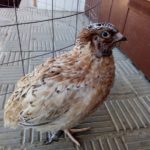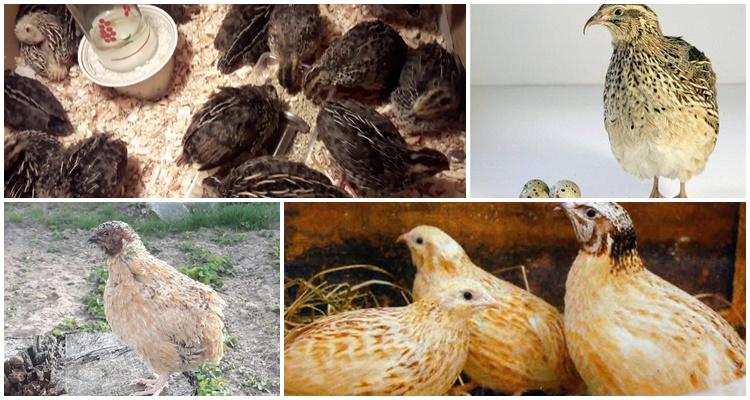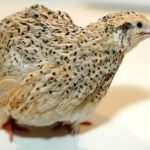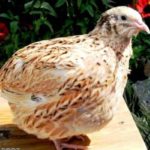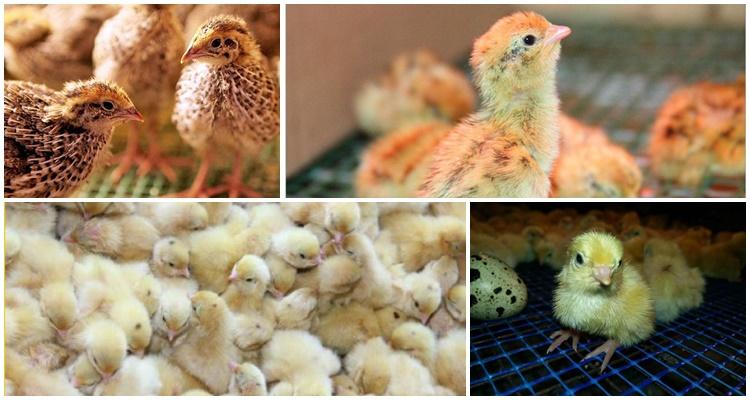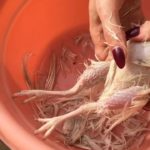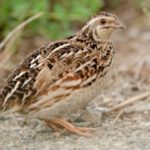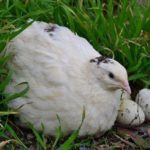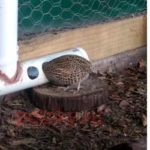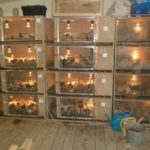The phoenix variety of quail is considered the subject of serious controversy among poultry farmers. In appearance, these birds are similar to birds of the Manchurian breed. Therefore, many people are sure that an independent Phoenix breed does not exist. However, this is not true. It’s just that representatives of the two breeds have a similar appearance. At the same time, the Phoenix breed is characterized by some behavioral and productivity features.
Description and characteristics of the bird
Quails of this breed have a number of features.This helps distinguish them from other bird species.
External features
Birds of the Golden Phoenix breed are characterized by beautiful feathers of a light yellow hue. When exposed to light, they appear golden. This is the main similarity with the Manchurian breed.
At the same time, the main difference between a phoenix is its body weight. It is 400 grams. These birds are considered broilers. Therefore, they are characterized by a fleshy chest and strong paws. Females weigh 50-150 grams more than males. Quails grow to their final size 2 months after birth. In this case, females begin to produce eggs after 1.5 months. On average, the weight of a typical egg in birds of this breed is 15 grams. If you feed the birds with high-quality food, this parameter can be increased to 20 grams.
Egg production
Female quails of this broiler breed eat approximately 40 grams of food per day and produce up to 300 eggs per year. The final performance parameters depend on the health of the birds and the characteristics of their keeping. In general, quails are low maintenance. However, when growing them, it is important to control temperature, light and humidity.
Character
Quails are characterized by a calm disposition. Birds have a calm behavior and do not fight. At the same time, sometimes males still enter into conflicts. Therefore, it is important to control their behavior. If necessary, birds should be removed.
Pros and cons of golden phoenix quail
Golden quails have many advantages.
How to keep and care for quails?
Breeding quails is not difficult. These birds are considered undemanding and do not require special nutrition. But when growing them, you still need to follow some rules. This will help increase productivity and minimize the risk of health problems. The main recommendations include the following:
- It is important to maintain optimal humidity parameters. Normally they should be 55-70%. High humidity provokes a decrease in quail egg production. In addition, young birds may begin to lag behind in development and not gain weight too quickly. Often, birds develop skin pathologies. Air ionizers are used to regulate humidity levels.
- It is imperative to control the temperature parameters. Chicks should be kept warm after birth. That's why they are usually planted in a brooder. For quails up to 1 month, the temperature should be +30-35 degrees. For older quails, +22-26 degrees is enough.The temperature should be reduced gradually, avoiding strong fluctuations.
- For 3 weeks after birth, it is important to provide constant lighting in the brooder. For adult birds, 16-17 hours of daylight is sufficient. It is important to avoid direct sunlight entering the house. Excessively bright light can irritate quails. That’s why they put 40-60 watt light bulbs in the poultry house. For broilers, 70-90 square centimeters per bird is enough. Laying hens require more space. 1 female needs 100-120 square centimeters.
The main difficulty in raising phoenixes is to obtain young animals, so chicks should be bred in an incubator or purchased from special farmers.
What to feed the breed?
Quails of this breed are considered very unpretentious in nutrition. Birds do not require specific food. It is recommended to feed broiler feed to animals raised for meat production. The remaining quail diet can be easily diversified with simple food.
If it is not possible to feed the birds with compound feed, they should be given crushed cereals and legumes. It is also acceptable to use a moderate amount of greens and vegetables. Birds are allowed to give potatoes, carrots, and beets.
To normalize the growth and development of quails, it is worth including vitamins and minerals in their diet. It is recommended to use feed chalk, crushed shells, and sand as useful additives.
To improve digestive functions, birds should definitely be given fine gravel. Since phoenixes are primarily bred for meat, it is recommended that they be given dairy products and animal feed. These include cottage cheese and whey.It is also acceptable to use fish and meat and bone meal.
Breeding rules
Quails of this breed do not have a clearly expressed maternal instinct. Therefore, an incubator can be used to produce offspring. There are 2 main types of incubators:
- Manual. In such models, survival rates do not exceed 50%.
- Automatic. In this case, hatchability parameters reach 80%.
Experienced farmers use incubation material that is a maximum of 7 days old. In this case, the chicks are born 17-18 days after laying. Immediately after birth, it is recommended to place the chicks in a brooder and maintain a temperature of +30-35 degrees. After 2 weeks, the parameters can be gradually reduced to +23-25 degrees.
Immediately after birth, it is recommended to give the chicks boiled eggs, mixing them with herbs and cottage cheese. After a week, you can use crushed millet and wheat cereal. After the birds reach 1 month, they can be switched to adult food.
Typically, farmers breed females. They manage to get eggs from them. In addition, quails produce a larger volume of meat. To control the composition of the population and the number of males and females, it is recommended to determine the sex of birds. This can be done already 1 month after birth.
Males have a dark mask on the head. Sometimes they have white eyebrows. At the same time, there are no inclusions on the chest of quails. The feathers in this area have a uniform color. Quails are characterized by the absence of a mask. At the same time, they have spots all over their body.
Diseases and prevention
The main reasons for the appearance of pathologies include the following:
- eating disorders;
- incorrect vaccination schedule;
- violation of sanitary and hygienic standards.
Most pathologies have a hidden course. They can be identified only when the majority of the livestock is affected. In such a situation, treating diseases is pointless. Therefore, it is recommended to focus on prevention rules. Infected birds must be promptly isolated from healthy ones.
When keeping quails in cramped cages, there is a high risk of traumatic eye damage. Birds also suffer from mallophagosis, pseudoplague, and ornithosis. They are susceptible to aspergillosis and quail pox. Viral infections spread from sick birds. Infection through food or water is also possible. Phoenix quails are distinguished by high productivity parameters. They are a source of quality meat and produce a lot of eggs. To do this, you need to take good care of the birds.



